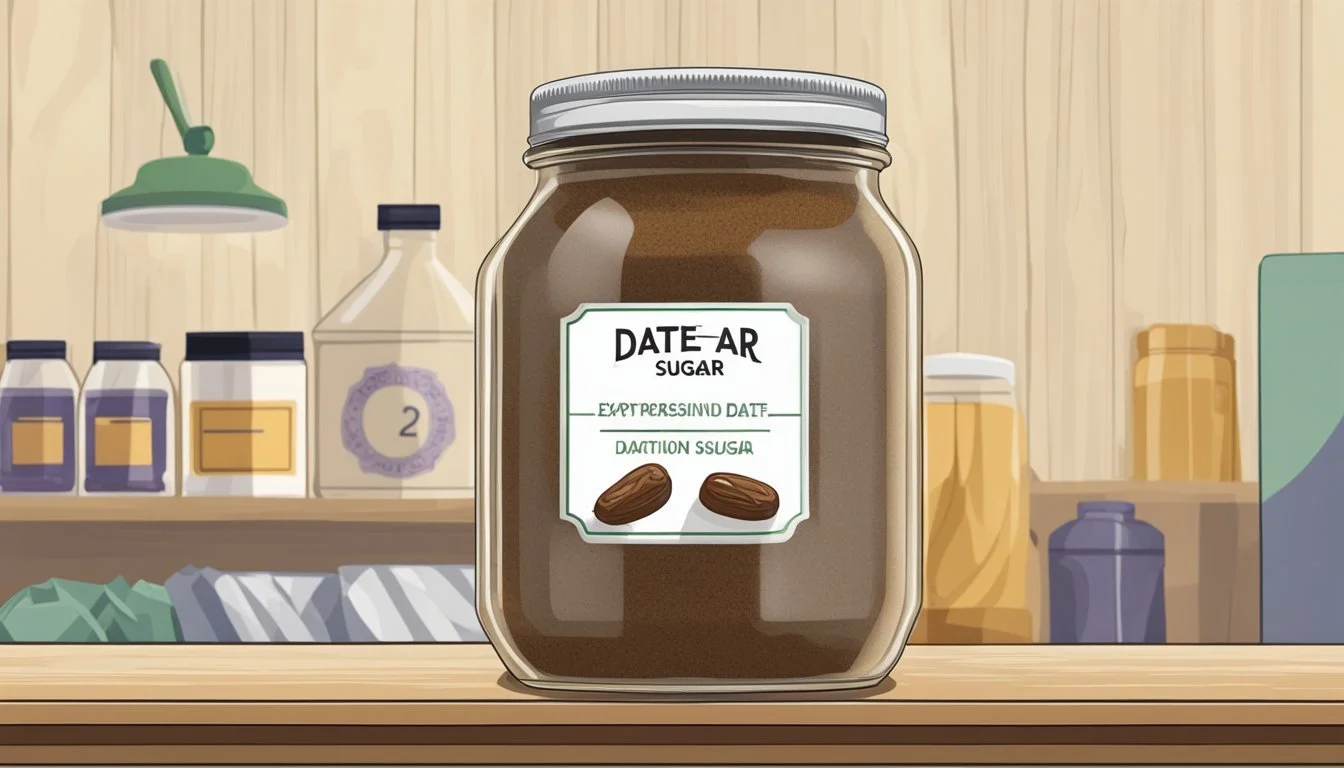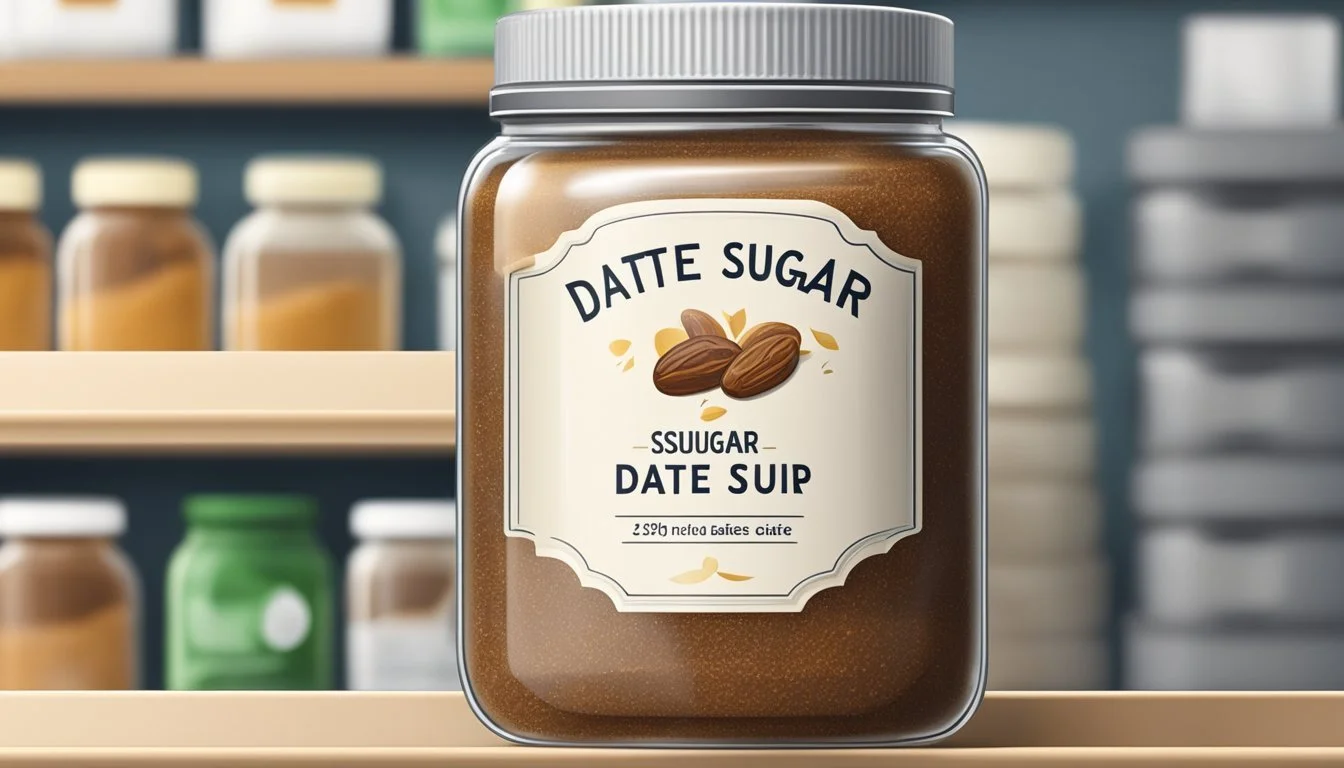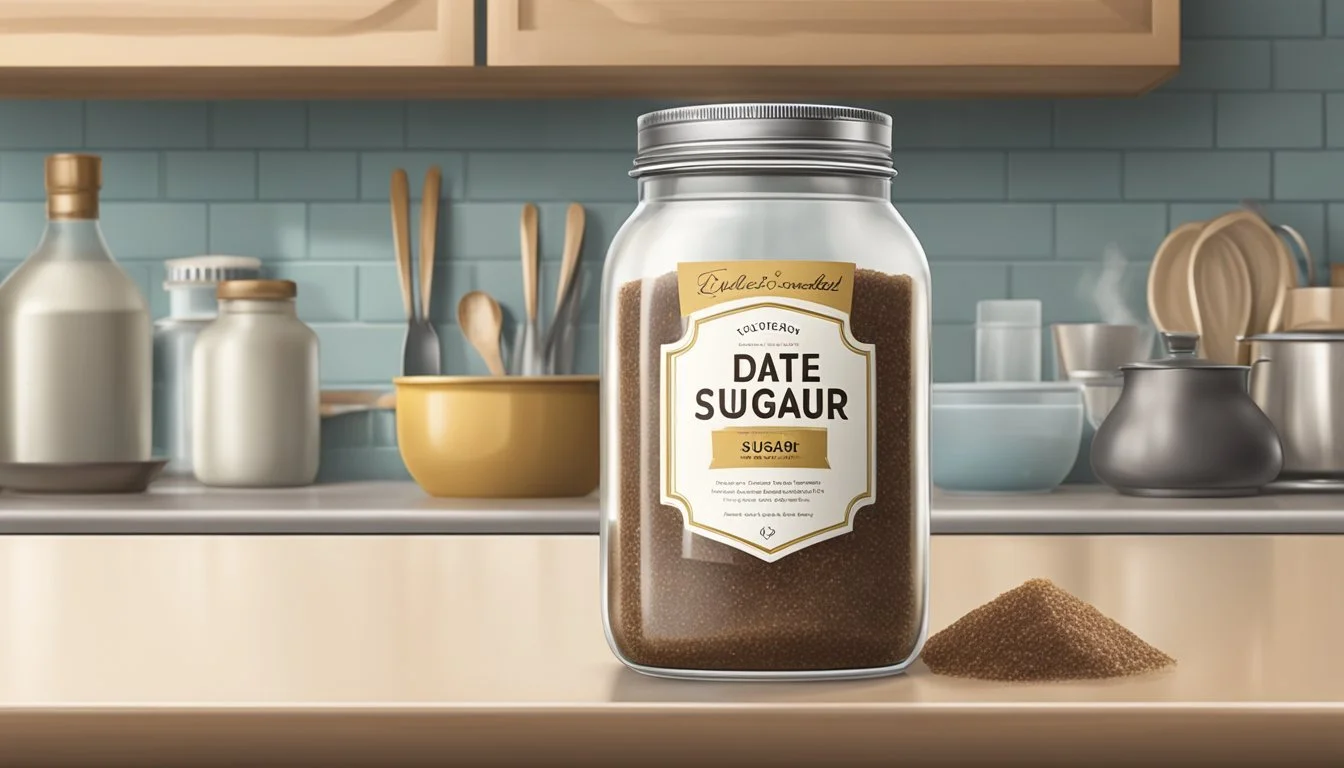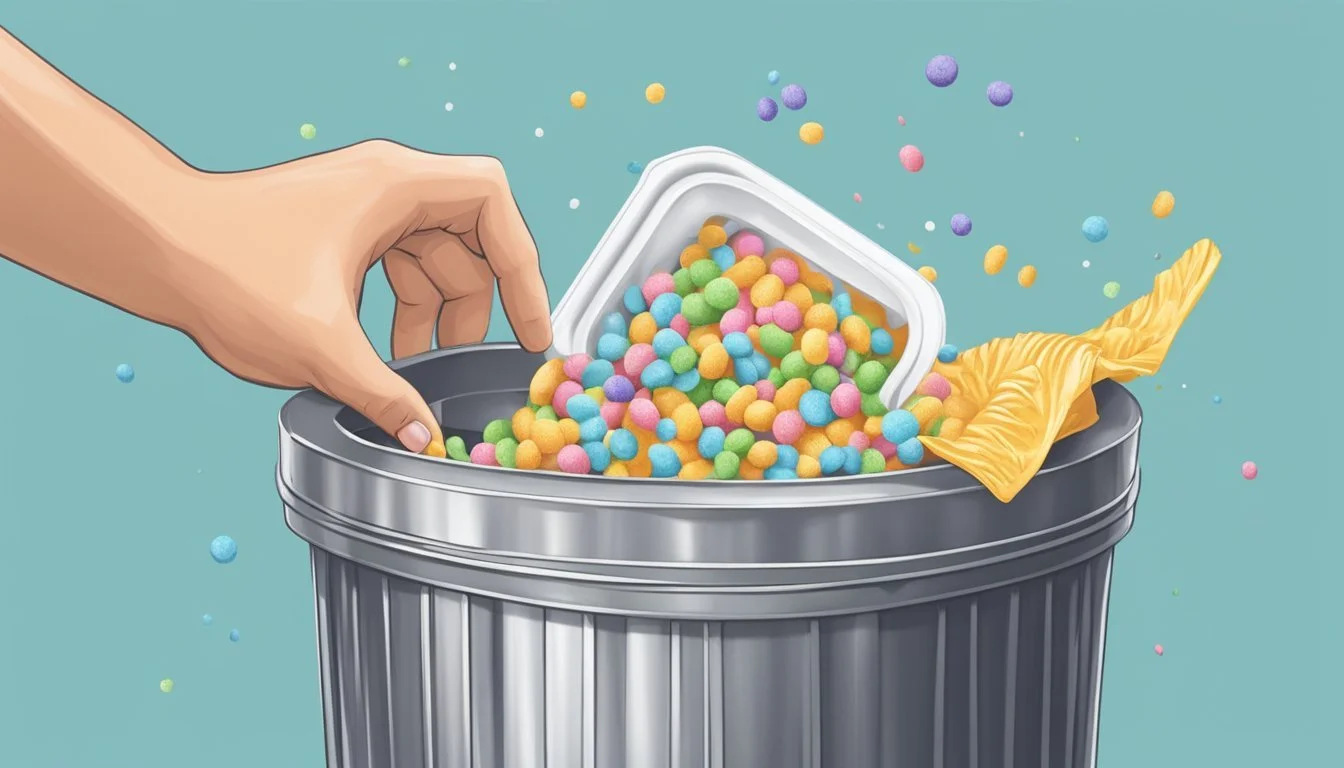Does Date Sugar Go Bad?
Shelf Life and Storage Tips
Date sugar is an increasingly popular alternative to traditional granulated sugar, but many wonder about its longevity and potential expiration. Fortunately, date sugar, much like other types of sugar, does not spoil in the same way fresh produce does. Properly stored, it remains safe to use beyond its best-by date.
Storage is crucial to maintaining the quality of date sugar. By keeping it in a cool, dry place and ensuring the container is tightly sealed, one can extend its shelf life considerably. For the best quality, it is advisable to use opened date sugar within six months, although unopened packages can last up to a year past the printed date.
Understanding how to properly store date sugar can help prevent degradation in flavor and quality. Since sugar acts as a preservative, keeping it dry and away from moisture will ensure it stays useful and safe for an extended period. Whether for baking or sweetening beverages, having confidence in the longevity and safety of date sugar makes it a reliable pantry staple.
Understanding Sugar and Its Varieties
Sugar comes in various forms, each with unique properties and uses. The key varieties include white, brown, and powdered sugar, each having distinct characteristics and applications.
Differences Between White, Brown, and Powdered Sugar
White sugar is the most common form, known for its pure sweetness and fine, granulated texture. It's highly refined and used in baking and sweetening beverages. Brown sugar, on the other hand, contains molasses, giving it a distinct flavor and moisture content, making it ideal for cookies, sauces, and marinades. Powdered sugar, or confectioners' sugar, is finely ground with added cornstarch to prevent clumping. It's best for icings, glazes, and dusting desserts.
Granulated white sugar is often used in jams and jellies due to its preservative properties, while raw sugar is less refined and retains some molasses, offering a subtle difference in taste and texture. Each sugar type impacts the texture, flavor, and appearance of the final product in baking recipes.
Nutrition and Uses in Cooking
Nutritional value varies between sugar types. White sugar is pure sucrose, providing high calories with no other nutrients. Brown sugar offers trace minerals from molasses like calcium, potassium, and iron, though not in significant amounts. Powdered sugar shares nutritional similarities with white sugar but often contains cornstarch.
In cooking, white sugar is versatile, commonly used in a wide range of baking recipes such as cakes, cookies, and pastries. Brown sugar adds moisture and a rich flavor to baked goods and sauces. Powdered sugar is indispensable for creating smooth icings and decorating desserts. Understanding these differences allows cooks to choose the right sugar for their specific recipe needs.
Factors Influencing Shelf Life of Sugar
The longevity of sugar is influenced by environmental conditions, storage methods, and potential contamination. Proper attention to these factors ensures sugar remains fresh and safe to use.
Role of Moisture and Temperature
Moisture is a critical factor in sugar's shelf life. Sugar must be stored in a low-moisture environment to prevent clumping and spoilage. High humidity can lead to the absorption of moisture, promoting microbial growth and reducing quality.
Temperature also plays a significant role. Sugar should be stored in a cool, dry place, ideally between 50°F and 70°F. Extreme temperatures, particularly heat, can cause sugar to melt or become hard, impacting its usability.
Importance of Proper Storage
Using an airtight container is essential for preserving sugar. Airtight containers protect sugar from moisture, odors, and insects. A dry pantry away from direct sunlight and heat sources is the best place for storage.
Packing sugar properly prevents contamination and maintains its quality. Ensuring containers are sealed after each use helps in maintaining optimal conditions. Proper storage practices extend sugar's shelf life significantly.
Effects of Contamination
Contamination is a major threat to sugar's shelf life. Exposure to pests like ants, bugs, and insects can render sugar unsafe. Keeping containers sealed tight is crucial to avoid such infestations.
Microbial growth due to moisture exposure can lead to mold and bacteria, posing food safety risks. Ensuring sugar is kept in a moisture-proof environment prevents these issues. Avoiding cross-contamination with other foods also helps maintain sugar's quality.
Identifying Signs of Bad Sugar
Bad sugar can be identified through changes in texture, the presence of unusual odors, or signs of pest infestation. Recognizing these signs ensures that the sugar remains safe to use and maintains its quality.
Changes in Texture and Clumps
When sugar starts to go bad, its texture can change significantly. Typically, sugar should have a free-flowing, grainy consistency. Clumpy or lumpy sugar can indicate exposure to moisture, which causes sugar crystals to stick together and form clumps.
Storing sugar in a cool, dry place helps prevent clumping. Using an airtight container is also beneficial to keep out moisture. If clumps form, they can sometimes be broken up and the sugar can still be used, but it's crucial to check for other signs of spoilage.
Odor and Pest Infestation
Unusual odors coming from sugar are a clear sign that it might be bad. Fresh sugar generally has no distinctive smell. If you detect a musty, sour, or off-putting odor, it indicates possible contamination or spoilage.
Pest infestation is another critical indicator. Sugar can attract pests such as ants and other insects. If there are signs of pests in the sugar container, such as tiny black specks, it should be discarded immediately to avoid any health risks.
How to Tell if Sugar is Bad
To determine if sugar is bad, consider both visual and sensory cues. Mold or discoloration is an immediate sign that sugar is not safe to eat. Even though sugar doesn't spoil easily due to its low moisture content, prolonged exposure to the right conditions can lead to spoilage.
Knowing how to store sugar properly extends its shelf life significantly. Expired sugar may still be safe to eat if it has been stored correctly and shows no signs of spoilage. Always check for changes in texture, any unusual odors, and signs of pests to ensure the sugar's quality and safety.
Recommended Practices for Sugar Storage
Maintaining the quality of sugar involves ensuring optimal storage conditions and preventing spoilage. Additionally, addressing issues such as hardening can help extend the usability of your sugar supply.
Ideal Conditions for Storing Sugar
Sugar should be stored in a cool, dark place away from heat sources like stovetops and ovens. Such environments can cause the sugar to lose both flavor and texture. A pantry or cupboard works well for this purpose.
Using an airtight container is crucial. Airtight containers help to prevent moisture absorption, which can lead to the sugar clumping. Many types of sugar, including granulated, brown, and date sugar, benefit from this method to maintain their best quality.
To maximize the shelf life, avoid storing sugar in areas with high humidity. Sugar is hygroscopic and can easily absorb moisture from the air. Keeping it dry ensures it remains usable for extended periods.
Methods to Prevent Sugar Spoilage
To prevent sugar spoilage, maintaining dryness is essential. Consider adding a desiccant packet to the container to absorb any residual moisture. Alternatively, placing a few grains of rice in the container can also help keep the sugar dry.
Inspect sugar regularly for signs of spoilage like strange odors or discoloration. Though sugar has a long shelf life, it’s best to use it within a reasonable period to enjoy optimal quality.
Keep sugar away from pests by ensuring containers are tightly sealed. This not only prevents contamination but also maintains the sugar's quality over time.
Reviving Hardened Sugar
If brown sugar or date sugar hardens, there are simple methods to revive it. For an immediate fix, place the sugar in a microwave-safe bowl with a damp paper towel. Microwave in 20-second intervals until softened.
Another approach is to place the hard sugar in an airtight container with a slice of bread or a few marshmallows overnight. The moisture from the bread or marshmallows helps to soften the sugar.
For a longer-term solution, you can use the oven method. Spread the hardened sugar on a baking sheet and warm it at a low temperature until it returns to its original texture. Ensure it cools completely before returning it to an airtight container to prevent re-hardening.
Combining these practices ensures that sugar remains fresh and usable, aiding in maintaining a consistent quality for all baking and cooking needs.
Expiration and Best-By Dates
Date sugar, like other types of sugar, has a long shelf life. Unopened packages generally last up to one year past their best-by date. Once opened, it’s advisable to use date sugar within six months to maintain its best quality.
Sugar Types and Shelf Life:
Sugar Type Unopened Opened Date Sugar 1 year past date 6 months Powdered Sugar Indefinite, best within 2 years Indefinite Brown Sugar Indefinite, best within 2 years Indefinite
While date sugar is best utilized within the specified period, brown sugar and powdered sugar can last indefinitely if stored properly. These sugars don’t expire in the traditional sense but can lose quality over time.
General Tips:
Store in airtight containers
Keep away from moisture and pantry pests
Inspect for clumping or spoilage
Sugar is a hygroscopic substance, meaning it absorbs moisture from the environment. Proper storage is key to maintain its quality long term.
Handling and Using Expired Sugar
Expired sugar, while potentially not as fresh, is usually usable if handled correctly. Ensuring its safety and maintaining the best quality involves evaluating its condition and following best consumption practices.
Determining Usability of Expired Sugar
When checking expired sugar for usability, moisture and contaminants are key factors.
Dry and Free of Contaminants: Sugar that remains dry and free from contaminants is generally safe. Look for any signs of mold, insects, or unusual odors. If these signs are absent, the sugar is likely safe to consume.
Texture Check: Granulated sugar may become hard or clumpy over time. It can often be restored by microwaving with a moist paper towel or heating in an oven. These methods can help return the sugar to a usable state.
Taste and Appearance: Sugar that has changed color or has an off-taste might have absorbed moisture or odors from the environment. It may not be harmful but could affect the flavor of dishes.
Best Practices for Consuming Older Sugar
Use in Cooking and Baking: Expired sugar can still be used in cooking and baking if it has retained its quality. In baked goods, sauces, or jams, its preservative properties remain effective.
Storage Conditions: To extend the shelf life of sugar, store it in an airtight container in a cool, dry place, away from heat and moisture. Proper storage prevents clumping and contamination.
Check Before Use: Even if sugar is past its best before date, a quick check before use, including a taste test and visual inspection, can ensure it is still of good quality.
Preservation Techniques: If the sugar is clumpy, microwaving for short intervals with a damp paper towel can restore its texture, ensuring it integrates well into recipes.
By following these steps, one can confidently use expired sugar without compromising food safety or dish quality.







